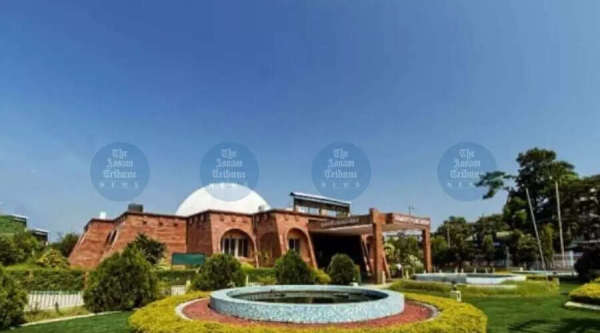 Progress on the Multi-Activity Centre
Progress on the Multi-Activity Centre
Guwahati, June 23: The construction of the Multi-Activity Centre at the Guwahati Planetarium is advancing rapidly, with expectations of a surge in visitor numbers due to the new facilities being introduced.
According to Saibar Rahman, the Director of the Guwahati Planetarium, the civil work for the Multi-Activity Centre is nearing completion. The next phase involves interior development, which will be partially managed by the State Public Works Department (PWD) and the National Council of Science Museums (NCSM) under the Ministry of Culture, Government of India.
Features of the New Centre
The Multi-Activity Centre will feature a cutting-edge auditorium, a 15-D theatre, a virtual reality (VR) studio, a space gallery, a science gallery, and a digital library, along with an astronomical observatory and a rooftop cafeteria.
The planetarium aims to finish the auditorium and theatre by the end of 2025.
Educational Goals
Rahman emphasized that the primary goal of establishing the Multi-Activity Centre is to foster a scientific mindset among the public, particularly targeting students, educators, and children throughout the state. The initiative aims to dispel long-standing myths and superstitions through engaging, hands-on science and technology education.
The facility is designed as a four-story RCC building, with each floor covering approximately 550 square meters, totaling around 2,500 square meters, including the terrace.
Visitor Expectations
The Guwahati Planetarium is also focused on boosting its visitor numbers. Records indicate that approximately 150,000 people visited in the past two years, with projections suggesting this could rise to 180,000 by the end of the current financial year due to the new infrastructure.
Innovative Educational Initiatives
Recently, the planetarium launched an Educational Metaverse in partnership with the Indian Institute of Technology (IIT) Guwahati, enhancing its existing VR zone.
This Educational Metaverse offers immersive learning experiences with unlimited educational content possibilities in the future. The planetarium is also equipped with telescopes for public astronomical events and advanced research.
In the last fiscal year, three types of telescopes were acquired: a Maksutov-Cassegrain, a Dobsonian, and two Astronomical Refractor Telescopes, all intended for public observation of celestial events.
Community Engagement and Outreach
The Guwahati Planetarium actively promotes scientific literacy through various initiatives across Assam. Recent activities include state-level workshops on observational astronomy for teachers, telescope-making workshops for students, public talks, and sky observation events.
Rahman noted that the planetarium plans to host a state-level workshop on its premises and conduct outreach programs in various districts, including mobile planetarium shows and sky observation events in the coming months.
Conclusion
By
Pranjal Bhuyan









